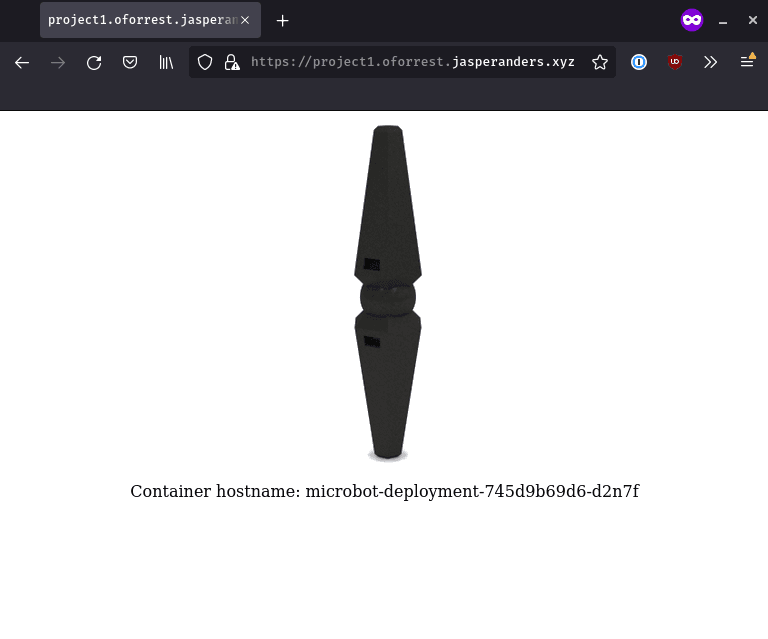Contents
SSL Encryption using Cert Manager
In this section, we want to enable HTTPS traffic to our cluster. For this we need a certificate issuer, that is Let’s Encrypt, and we then specify an ingress resource to terminate our SSL connection. For an easy setup, we use the cert-manager. It creates a resource in our cluster that issues and updates certificates automatically.
Important: The standard port for HTTPS traffic is 443. So make sure port 443 is open, both on your server firewall and that your cloud provider does not block traffic to this port. Otherwise, you won’t be able to reach your application at all.
With this out of the way, let’s get started:
Install Cert Manager into the Cluster
kubectl apply -f https://github.com/jetstack/cert-manager/releases/download/v1.6.1/cert-manager.yamlVerify that everything is installed correctly. Notice that the cert manager resources get installed into the
cert-managernamespace.kubectl get deployments -n cert-manager [Output] NAME READY UP-TO-DATE AVAILABLE AGE cert-manager-cainjector 1/1 1 1 2m41s cert-manager 1/1 1 1 2m41s cert-manager-webhook 1/1 1 1 2m41sCreate the Certificate Issuer. We will use Let’s Encrypt as a free issuer. Let’s Encrypt offers a staging service, which has no quota limitation (because it issues no real certs). We can use this for testing and later switch to the production issuer to get a valid certificate for our services.
First create the staging issuer.
# staging-issuer.yaml apiVersion: cert-manager.io/v1 kind: Issuer metadata: name: letsencrypt-staging spec: acme: # The ACME server URL server: https://acme-staging-v02.api.letsencrypt.org/directory # Email address used for ACME registration email: user@example.com # Name of a secret used to store the ACME account private key privateKeySecretRef: name: letsencrypt-staging # Enable the HTTP-01 challenge provider solvers: - http01: ingress: class: nginxThen create the production issuer.
# prod-issuer.yaml apiVersion: cert-manager.io/v1 kind: Issuer metadata: name: letsencrypt-prod spec: acme: # The ACME server URL server: https://acme-v02.api.letsencrypt.org/directory # Email address used for ACME registration email: jasper.anders@online.de # Name of a secret used to store the ACME account private key privateKeySecretRef: name: letsencrypt-prod # Enable the HTTP-01 challenge provider solvers: - http01: ingress: class: publicApply both.
kubectl apply -f staging-issuer.yaml kubectl apply -f prod-issuer.yamlAfter we have created the certification issuer resource, we need to apply some changes to our ingress resource
# microbot-ingress.yaml apiVersion: networking.k8s.io/v1 kind: Ingress metadata: name: microbot-ingress annotations: cert-manager.io/issuer: "letsencrypt-staging" # change this to "letsencrypt-prod" for a valid encryption spec: ingressClassName: public tls: - hosts: - project1.oforest.jasperanders.xyz secretName: quickstart-tls rules: - host: project1.oforest.jasperanders.xyz http: paths: - path: / pathType: Prefix backend: service: name: microbot-service port: number: 80kubectl apply -f microbot-ingress.yamlAfter applying this, we find our site to be SSL encrypted. You might, see a warning, just continue, and you will see your microbot. Note the little exclamation mark, this is because we used the staging issuer (this is also the reason you saw the warning).
For production, we want to change the annotation in our manifest YAML from
cert-manager.io/issuer: "letsencrypt-staging"tocert-manager.io/issuer: "letsencrypt-prod". Also, you need to delete the SSL secret, the cert manager will recreate it with the production issuer.That’s it. You enabled SSL encryption for your ingress resource.
Read Next
This concludes the set-up process of the server. Next we will connect a GitLab runner to our cluster.
Sources: https://cert-manager.io/docs/tutorials/acme/ingress/
Designed & Developed by Jasper Anders
